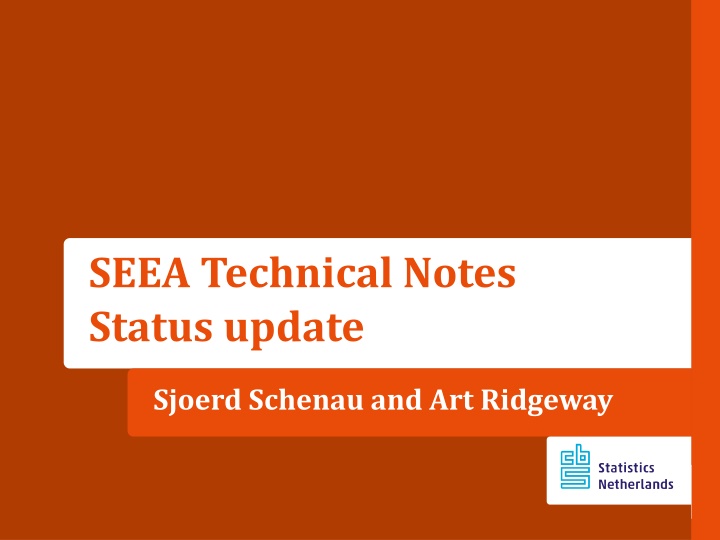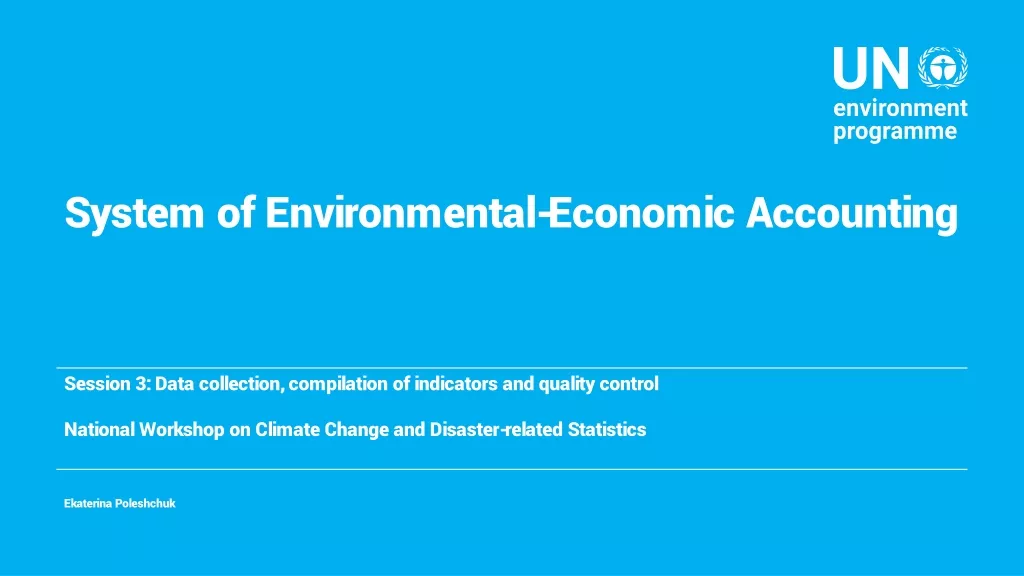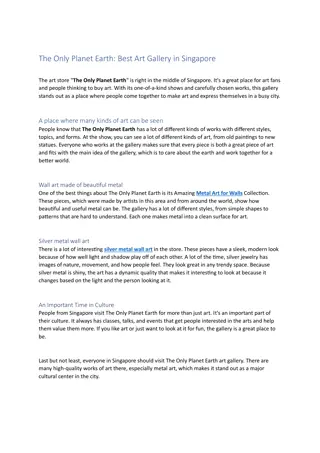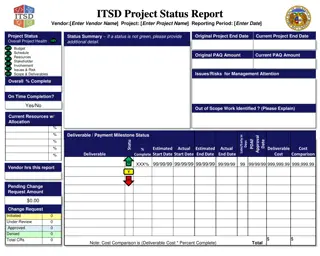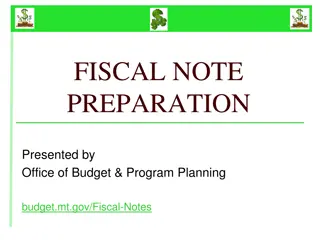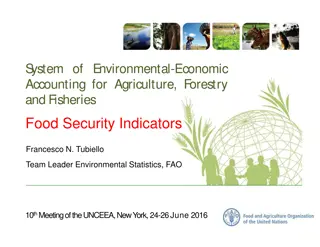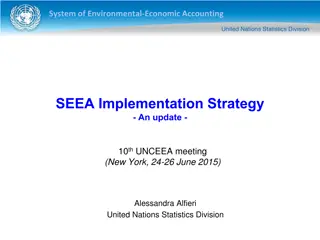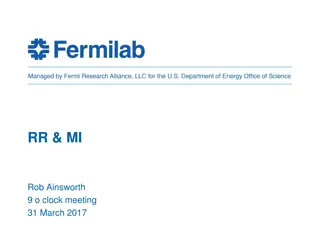SEEA Technical Notes Status Update by Sjoerd Schenau and Art Ridgeway
SEEA Technical Notes provide guidance and support for the implementation of the System of Environmental-Economic Accounting (SEEA). The notes cover various topics related to environmental-economic accounts and tables, with a focus on key policy issues. The work process involves input from the SEEA technical committee, London group topic leaders, and the editor, Art Ridgeway. Current priority notes include Land, Water, Energy, Air Emission, and more, with some in final draft stages. The overall goal is to assist countries in implementing the SEEA framework effectively.
Download Presentation

Please find below an Image/Link to download the presentation.
The content on the website is provided AS IS for your information and personal use only. It may not be sold, licensed, or shared on other websites without obtaining consent from the author.If you encounter any issues during the download, it is possible that the publisher has removed the file from their server.
You are allowed to download the files provided on this website for personal or commercial use, subject to the condition that they are used lawfully. All files are the property of their respective owners.
The content on the website is provided AS IS for your information and personal use only. It may not be sold, licensed, or shared on other websites without obtaining consent from the author.
E N D
Presentation Transcript
SEEA Technical Notes Status update Sjoerd Schenau and Art Ridgeway
Content Background Status of the technical notes Core tables Starting point for data collection 2
Background The United Nations Statistical Commission at its 44th session in March 2013 adopted the implementation strategy for the System of Environmental-Economic Accounting (SEEA) Part of the implementation strategy: the development of technical notes and core tables In 2012 and 2013 some initial work was done on the development of the technical notes. In 2014 /2015 the editor (Art Ridgeway) has prepared drafts of several technical notes 3
Nature of the technical notes The general purpose of the technical notes : To assist the SEEA implemenation process. The technical notes, for a given topic, a range of relevant features and considerations within a limited number of pages (e.g. 10-15) to support countries in the implementation of the SEEA. Focus on policy relevance of the accounts and tables, addressing key policy issues The technical notes complement the SEEA implementation Guide 4
Template of SEEA Technical Notes 1. Introduction and general description 2. SEEA-CF accounts 3. Core tables and relevant aggregates / indicators 4. Compilation of the accounts 5. Extensions and links 6. References 7. Annex Section on data quality was moved to the overarching note 5
Workprocess: Responsibilities SEEA technical committee will provide overall technical guidance to the process by providing general guidelines, checking and reviewing the technical content of the draft SEEA technical notes and core tables London group topic leaders will collect all relevant material for the topic of their technical note and submit this material to the editor. They will assist the editor when additional questions arise. The editor collects all relevant material and is responsible for drafting the technical notes and core tables, including revising old drafts based on comments received. 6
Current status Priority notes already underway 0) Overarching note 1) Land 2) Water 3) Energy 4) Air emission 5) Environmental goods and services 6) Environmental protection expenditures Final draft Near final draft Near fnal draft Near final draft first draft avialbale Final draft first draft avialbale Additional notes listed as priority by UNCEEA 7) MFA and waste 8) Forest 9) Environmental taxes and subsidies work still has to start work still has to start work still has to start Notes not mentioned as priorities 10) Minerals 11) Aquatic resources 12) Tourism 13) Agriculture 14) Nutrient and phosphorous balances 15) Carbon accounting 16) Biodiversity accounting 7
What are core tables and accounts? The main function of the core tables and accounts is to assist countries in the implementation of the SEEA by making clear to compilers what data is included in the core tables and accounts and what key information can be derived. The (core) accounts are the key accounts from SEEA CF that are relevant for the topic of the technical note. In the technical notes these core accounts should be described with regard to the key concepts, structure, accounting identities and classification without going into much detail. The core tables provide an aggregated set of data which provides enough information to derive relevant indicators. The data in the core tables directly comes from the core accounts, but is combined with other relevant data sources such as the national accounts and labour statistics. 8
General principles for constructing the core tables Number of core tables. The aim is to provide one or two core tables for each technical note. Physical and monetary data. Where relevant, the core table combines both physical and monetary data. Keep it simple. The SEEA core tables must be kept relatively simple, as they primarily aim to assist new compilers and non-statistical users of the data. Indicators. Indicators and useful aggregates that can be derived from the core table are to be described in the section directly following the description of the core tables and accounts. 9
Starting point for data collection (?) Core Tables provide key information from the SEEA-CF accounts Important indicators can be diretcly derived from these tables Issue : Still to complex ? Issue: level of disaggregation (ISIC, product groups, etc.) 11
